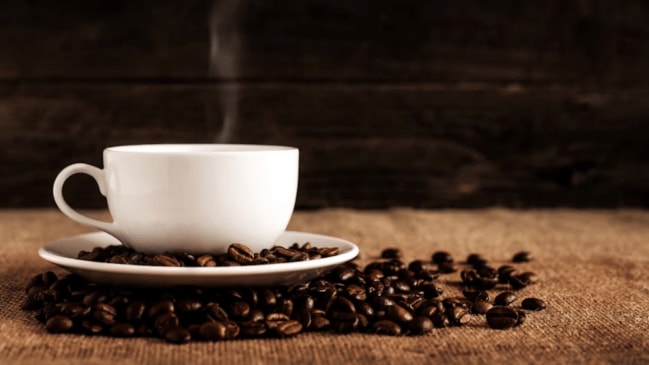Opinion Pour over? Botanicals? The story of how Indians became coffee and alcohol nerds
Behind the recent award won by an Indian coffee liqueur is the story of larger social transformation reflected in changing attitudes towards coffee and alcohol
 Before cold brews in fancy cafes and award-winning Indian Single Malts, there existed the humble filter coffee drunk in a tumbler and a quick peg of brandy or rum drunk after a long day’s work.
Before cold brews in fancy cafes and award-winning Indian Single Malts, there existed the humble filter coffee drunk in a tumbler and a quick peg of brandy or rum drunk after a long day’s work. By Madhusudan Bhavaraju
Bandarful, an Indian coffee liqueur, recently won the world’s best liqueur at the USA Spirits Ratings 2025. Indian beverage brands, especially coffee and alcohol brands are now world-class and going global. It is a marker of how India’s once-functional relationship with coffee and alcohol has evolved into a culture of connoisseurship.
Before cold brews in fancy cafes and award-winning Indian Single Malts, there existed the humble filter coffee drunk in a tumbler and a quick peg of brandy or rum drunk after a long day’s work.
The morning cup of coffee and the end-of-day tipple were defined by utility. Coffee served to wake people up, and alcohol was a straightforward choice from familiar mass market labels. A strong coffee was a ritual in the morning, and a strong drink was a way to wind down in the evening.
Options were limited. It did not matter if you were drinking whiskey or rum or brandy, they were all the same — neutral spirits distilled from molasses. There were a few scotch blends, but good whiskeys were rare, mostly sourced duty-free via visiting NRI relatives.
Both these beverages were drunk by a few. Coffee was the traditional South Indian coffee or an instant coffee for the busy executive. Alcohol was local Indian brands that were strong and potent. They were drunk quickly in a shady bar to get high, not to particularly enjoy the experience.
But as with many things, the story is changing with a changing India. Rising incomes, global travel and exposure from social media, has made the Indian consumer look for experiences.
Coffee moved first, because unlike alcohol there were no taboos. The shift began with cafes and accelerated with specialty roasters, and fancy brewing techniques like pour overs or cold brews. Coffee drinkers started to pay attention to origins, roast levels and grind sizes. One can imagine the old South Indian grandmother bemused and smirking at all of this. Those grandmothers were, of course, nerds in their own way with their dark aromatic coffee powders (no chicory, please!), exquisitely maintained filters and frothy coffee sipped in a steel tumbler and davara.
Spirits are now walking the same path. The tone around alcohol has changed in many homes and restaurants. It’s no longer consumed in the shadows and behind code words. Indian spirits are winning global awards and Indian whiskeys are reviewed by popular YouTubers and review sites.
New words have entered our consciousness and there is new jargon to catch up to.
With coffee we have single estate, grind sizes, pods, pour overs, French press, and Chemex. Coffee nerds have become a thing. It is not enough to just enjoy a cup of coffee — you need to brew it the right way with the right beans, the right roast and even the right shape of cup to drink it from.
This is true for our drinking conversations: Single malt, small batch, peated, sherry cask, cask strength, botanicals, and dilution. Drinkers want to know what is in the bottle and why it tastes the way it does. It is no longer about a quick large peg.
Brands have started to notice this too. Good cafes don’t only sell coffee; they teach you how to brew good coffee and sell their own specialty roasts. Whiskey makers conduct tours where consumers learn about aging, casks and the right glassware to drink in.
Why is this happening now?
For years the Indian consumer lived with caution. Scarcity shaped habits and spending. People valued something tangible over an indulgence, however small. They spent money on things that lasted a long time — and experiences in the mind of the Indian customer were fleeting and were not to be pursued.
That gap is now being filled. Incomes have risen, travel has widened horizons, and social media has brought global food and drink culture into living rooms. People are still price conscious, but they also want the taste and story.
Coffee and spirits are in the right place at the right time because they deliver accessible experiences. They have become a part of a culture where people like to share and try something new all the time.
But this is India, and like all things in India multiple cultures co-exist next to each other.
Within a few hundred metres in Bengaluru, you will find a fancy café serving coffee at Rs 400, a Dharshini serving coffee at Rs 20, a busy professional making an instant coffee and an elderly retired couple sipping their filter coffee staring at the world pass by.
The same goes with alcohol. You will find a basic bar with plastic furniture and a fancy cocktail place close to each other. The old Indian IMFL labels sit on a shelf in the local liquor store next to award-winning Indian whiskeys. The budget peg of rum is not completely out of place next to a carefully curated tasting flight.
That’s the story of India’s fast changing coffee and spirit’s culture. It is not one culture, but many cultures and each with its own unique tastes, aromas, habits and rituals. Everyone is drinking, in their own way.
The writer is Founder, The Brand Ignition Co.




